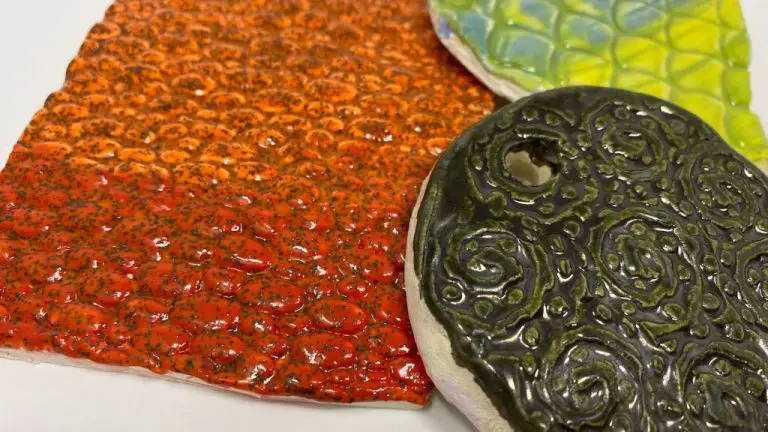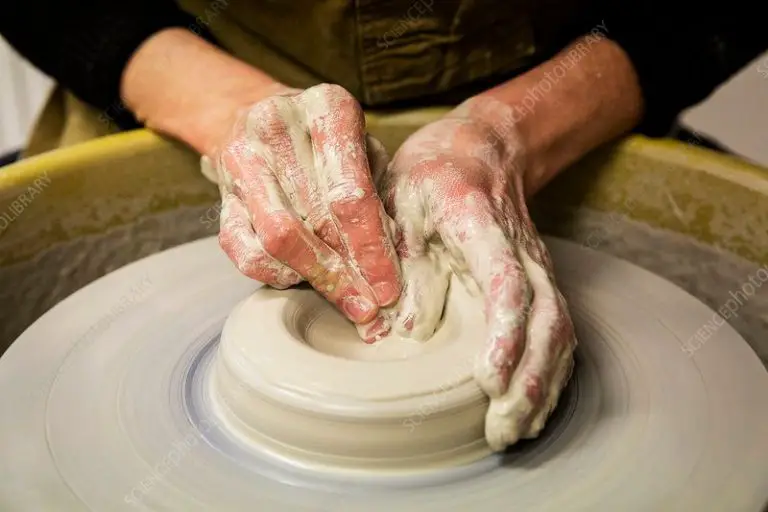What Is The Best Material To Make A Silicone Mold?
Silicone molding is the process of making molds out of silicone rubber for casting various materials such as resins, plaster, concrete, wax, chocolate, or candle wax. Silicone rubbers are ideal for molding due to their high tear strength, low shrinkage, rapid curing, and excellent chemical and temperature resistance.
The most common silicone rubbers used in mold making are:
- Platinum Cure Silicones – Cure at room temperature with a platinum catalyst. They have excellent chemical and heat resistance, cures with minimal shrinkage, and molds last a long time. The disadvantage is the platinum catalyst is inhibited by some materials like latex, sulfur, or tin compounds.
- Tin Cure Silicones – Cure at room temperature using a tin catalyst. They are cheaper but have lower heat resistance. May be prone to shrinkage over time.
- Condensation Cure Silicones – Cure by releasing acetic acid during the reaction. They are very inexpensive but have significant shrinkage.
![]()
Overall, platinum cure silicones offer the best properties for mold making but are more expensive. Tin cure provides a more affordable option. Condensation cure is suitable for temporary molds.
Silicone Rubber
Silicone rubber is one of the most common and versatile materials used for making molds. It has many properties that make it ideal for mold making, including:
Silicone rubbers are thermoset polymers that possess a silicon-oxygen backbone, with methyl or vinyl side groups. The different molecular structure gives silicone rubbers their unique properties (Aeromarine Products, 2022).
Some key advantages of silicone rubber for mold making include:
- High tear strength and durability – can withstand multiple castings
- Low viscosity for capturing intricate detail
- High accuracy in reproducing details
- Excellent release properties – models can be demolded easily
- Heat resistance up to over 500°F
Silicone rubbers come in different hardness grades based on Shore A scale. Softer grades like 10-20A are good for casting concrete and plaster that require flexible molds. Harder grades like 40-60A are suitable for casting resins and foam (Alumilite, 2022).
The main drawbacks of silicone molds are that they can be more expensive than other materials, and they are sensitive to moisture which reduces mold life. Silicones perform best for shorter run castings rather than mass production.
Overall, silicone rubber is the preferred material for detailed molds when flexibility, tear resistance and precision are required. It can be used to make molds for concrete, plaster, resins, candy, soaps and more.
Polyurethane Resin
Polyurethane resin is a popular material for making molds due to its flexibility, durability, and ability to capture fine details. Polyurethane resin comes in several different grades that vary in hardness, cure time, and other properties. The main pros of polyurethane resin for mold making are:
- High tear strength and flexibility – polyurethane molds can flex and bend without damage
- Good chemical resistance – resistant to many casting materials
- Extremely accurate detail reproduction – captures the finest textures and details
- Range of hardness from soft rubber to hard plastic depending on type used
- Relatively low viscosity for easy pouring and degassing
The main downsides to polyurethane resin are that it can be prone to shrinkage, it has a limited shelf life, and some formulations contain isocyanates that require safety precautions. Polyurethane casting resins come in many varieties including rigid, semi-rigid, and flexible, as well as fast and slow setting. Polyurethane resins are ideal for making molds for concrete, plaster, wax, low-melt metal alloys, resins, and other materials.
Epoxy Resin
Epoxy resin is a popular material for making molds due to its strong adhesive properties, low shrinkage, and versatility. Some key properties of epoxy resin that make it suitable for mold making include:
- High strength and durability – Epoxy molds can withstand multiple castings and demoldings.
- Low viscosity – Allows the resin to flow easily over intricate surfaces and fully capture detail.
- Low shrinkage – Critical for an accurate reproduction of the original model.
- Chemical and heat resistance – Can withstand casting materials like polyurethane, polyester, and various metals.
The main advantages of epoxy resin molds are their ability to pick up fine detail, reproduce complex shapes, and provide tight tolerances in the finished casting. Epoxy molds are commonly used for small production runs of prototypes, replicas, and decorative items.
Some limitations are that epoxy resins can be sensitive to moisture and may require sealing. Complex or large molds may also be cost prohibitive with epoxy. There are many formulations of epoxy resin available depending on the working time, hardness, flexibility, and heat resistance required.
Epoxy resins are best suited for making molds of models with intricate detail and complex geometries, such as jewelry, sculpture, and mechanical parts. Molds made from epoxy can be used with most liquid resins and low-temperature melt metals like tin, zinc, and pewter.
According to Ecopoxy, some best practices when using epoxy resin to make molds include selecting the proper epoxy formulation, creating registration keys, and applying mold release.
Polyester Resin
Polyester resin is a durable plastic material made from polyester polymers dissolved in styrene. It is commonly used in fiberglass construction and composite fabrication due to its excellent strength, adhesion, and ability to cure at room temperature. Some key properties of polyester resin for mold making include:
- Low viscosity for easy pouring and mold filling
- Good surface finish on molded parts
- Relatively inexpensive compared to other resins
- Good impact resistance
- Dimensionally stable when cured
Polyester resin has some advantages as a mold making material. It is readily available and affordable, has a long shelf life, and cures fully at room temperature. The cured resin has moderate hardness and strength. Polyester molds can withstand casting materials like plaster and concrete.
Some drawbacks of polyester resin are its high shrinkage, lower heat resistance, and tendency to be brittle over time. The styrene fumes during curing require proper ventilation. Polyester molds have lower durability than epoxy or silicone. They may only allow 10-30 castings before degrading.
There are different grades of polyester resin for casting applications. Clear polyester resins like Clear Casting Polyester Resin allow for transparent castings. Filled polyester resins contain additives for thixotropic properties and reduced shrinkage. Fire retardant polyester resins are also available.
Overall, polyester resin is a suitable option for making low cost molds for plaster, concrete, and polyester casting. The molds have moderate durability for limited runs. Polyester works well for large molds due to the low cost. It is not recommended for high heat applications above 120°F.
Plaster
Plaster is a common casting material used for making molds. There are several beneficial properties of plaster that make it a popular choice for mold making:
- Plaster comes in a fine powdered form that can be mixed with water. The liquid plaster mixture is easily pourable into molds.
- It cures quickly, usually within 30-60 minutes, allowing for rapid production of molds.
- Plaster has high rigidity and compressive strength as a solid, making it good for accurate reproduction of fine details.
- It is porous, allowing air bubbles to vent to the surface during curing. This results in smooth mold surfaces.
- Plaster is relatively inexpensive compared to other mold making materials.
There are also some limitations of plaster to consider:
- It has low tensile strength, so very thin or complex molds can crack or break.
- Plaster molds are prone to deterioration over time with exposure to moisture.
- The set time is fast, which can make large or intricate molds challenging.
- It may require sealing for certain applications.
Common types of plaster for mold making include pottery plaster, plaster of paris, and hydrocal white. The formulation affects properties like set time, strength, and surface smoothness.
In summary, plaster can be an excellent choice for mold making needing an affordable material for moderate production runs of less detailed molds. It is commonly used for ceramic slip casting, sculpture, casting metals or resins, and other arts and crafts applications.
Alginate
Alginate is a popular material used for making molds, especially for life casting and making molds of the face or body. It is derived from brown seaweed and has unique properties that make it useful for mold making.
Some key properties of alginate:
- Fast curing time – alginate will set and cure in just a few minutes, allowing you to quickly make molds.
- Highly accurate detail reproduction – alginate captures extremely fine detail from the original model.
- Skin safe – alginate is non-toxic and safe for molding directly on skin.
- Flexible when cured – alginate molds have some flexibility and stretch which makes demolding easy.
- Single-use – alginate molds are temporary and can only be used for one or two castings.
Alginate does have some downsides as a material. It is sensitive to humidity and heat which can impact the quality of the mold. Alginate also shrinks slightly as it cures which can reduce mold accuracy. And it has a short shelf life, especially in humid conditions.[Alginate and Moulage – ArtMolds.com](https://www.artmolds.com/molding-materials/alginate.html)
There are different alginate formulas available that have varying working time, strength, and flexibility. Slower-setting alginates allow more time to apply the material and create the mold. Stronger formulas, like Luna Bean Alginate Molding Powder, produce a more durable mold that can withstand casting pressures better.[Luna Bean Alginate Molding Powder Refill for Casting Molds – Amazon](https://www.amazon.com/Alginate-Molding-Powder-Refill-Casting/dp/B007PULSRM) Some alginate products also include additives to reduce shrinkage.
The best applications for alginate molds include body casting, molding faces and other body parts, food molding like chocolate or ice, and creating textured molds from organic materials. Alginate’s fast cure time and skin-safe properties make it the go-to material for life casting applications.
Silicone Rubber vs Other Materials
When it comes to choosing the right material for making molds, silicone rubber has some advantages and disadvantages compared to other common mold making materials like polyurethane resin, epoxy resin, polyester resin, plaster, and alginate.
Compared to polyurethane resin, silicone rubber is more heat resistant, staying stable up to over 500°F, while polyurethane resin degrades above 200°F (Source: https://www.smooth-on.com/tutorials/mold-rubber-silicone-vs-polyurethane/). Silicone also has superior chemical and UV resistance. However, polyurethane resin generally has higher tear strength and tensile strength than silicone.
Versus epoxy resin, silicone rubber molds have greater flexibility and lower viscosity for capturing intricate detail. They also have higher heat resistance than epoxy. However, epoxy resin molds have higher rigidity and can better withstand abrasion.
Compared to polyester resin, silicone rubber is far more flexible and heat resistant. It also has lower viscosity for picking up detail. Polyester resin is much more rigid when cured.
Silicone rubber molds have advantages over plaster molds like lower viscosity for detail, higher longevity, and flexibility. However, plaster is significantly cheaper than silicone.
Finally, silicone molds have superior durability compared to alginate molds. Alginate molds are very fast curing but not very durable, especially for casting materials like concrete or resin.
Best Practices
When selecting the right silicone material for mold making, consider the desired properties of the final cast part. Platinum-cure silicones offer high tear strength and more flexibility, while tin-cure silicones offer shorter demold times. The viscosity of the silicone determines how well it captures fine details – lower viscosities like Smooth-On OOMOO 25 are great for picking up extremely fine features.
Proper mold making technique is crucial for capturing all surface details and avoiding bubbles. Prepare the original model properly by spraying or brushing on mold release. Mix silicone thoroughly and degass the material in a vacuum chamber before pouring over the original model. Allow silicone to cure fully before demolding.
For casting skin-safe prosthetics and props, platinum-cure silicones offer high biocompatibility. When casting food-safe items like chocolate or ice molds, use a food-grade tin cure silicone. For molding wax and low-melt alloys, high-temp silicones withstand over 500°F.
Conclusion
In summary, when looking at the best material for making silicone molds, a few key factors come into play. Silicone rubber ranks high in terms of flexibility, durability, ease of use, and ability to capture fine detail. Polyurethane resin and epoxy resin can be viable options as well, but may not have the same level of flexibility and longevity as platinum-cure silicone. Plaster and alginate are cheaper alternatives, but have more limited use cases. Ultimately, for its versatility and reliability, platinum or tin-cure silicone rubber emerges as the top choice overall for DIY silicone mold making across a wide variety of applications.




